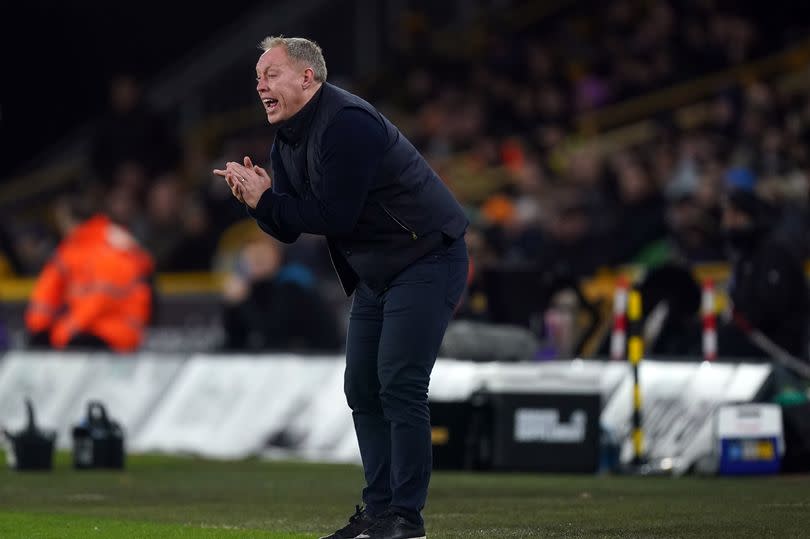How Leicester City could line up under Steve Cooper with two systems explained

Take a closer look at Steve Cooper’s 56 Premier League matches in charge of Nottingham Forest and there’s a remarkable number of formation changes.
Leicester City have been used to a settled set-up under Enzo Maresca, the Italian committed to his shape, with a few odd details changed between matches. But Forest under Cooper would quite regularly swap between systems and styles every few months.
Sometimes it was a case of adapting to the quality of the opponent, sometimes it was a case of trying something new in a bid to halt the club’s sliding form. With a host of new signings to manage, it may also have been a case of trying to find the best combination of players too.
READ MORE: Leicester City next manager search into final stages as clear frontrunner emerges
READ MORE: Leicester City spark another storm with 'shock' decision as urgent meeting requested
All that chopping and changing means it’s not clear how City will line up should Cooper take the reins. It may be a case that he would have to assess the squad over pre-season before making any decisions on how City play.
Nevertheless, we have taken two of Cooper’s most prominent set-ups from his time at the City Ground and looked at how the Leicester squad, as it stands, may fit into them. Tell us your preferred formation in the comments section at the bottom of the page.
3-4-1-2
The formation that Cooper used to guide Forest to promotion, that he initially tried upon their Premier League return, and that he reverted back to on occasion, was a 3-4-1-2 or a variant of. In the Championship, and in the early days of the club’s return to the Premier League, the focus was on attacking, with the wing-backs rampaging down the flanks and with plenty of progressive football played. In more trying moments, the three-at-the-back system often dropped into a back five as Forest played in a deep block.
If Cooper is willing to be adventurous, there are the players in the City squad to make the 3-4-1-2 shape work. For a start, there’s an abundance of centre-backs to form a strong back three, each with qualities in possession or in driving the ball forward.
Jannik Vestergaard and Conor Coady are contenders for the central position, while Wout Faes could play on the left of the trio, with Harry Souttar potentially brought back into the fold on the right. Ben Nelson is also an option.
At wing-back, James Justin, who had his attacking instincts limited by Maresca’s system, would be perfect for the job on the right-hand side, while Victor Kristiansen, back from a loan at Bologna, could do the same on the left. For a forward-thinking, technically-gifted midfield pairing, Cooper would have Harry Winks and Ricardo Pereira to choose from.
Kiernan Dewsbury-Hall would take on the Morgan Gibbs-White role behind the two strikers, a key position in making the system work. But while City have three strikers to choose from for the two positions up front in Jamie Vardy, Patson Daka, and Tom Cannon, their similarities may mean that Stephy Mavididi is partnered with Vardy instead.
This shape doesn’t really allow for wingers, and so it would be difficult to get Abdul Fatawu into the side should he sign, as expected, from Sporting Lisbon. Albeit, his defensive commitment shown last season means he may be able to play as a wing-back in matches where City are on the front foot.
4-3-3
When Cooper tried a back four at Forest, it was usually in the shape of a 4-3-3, and so looked very similar to the system that City played under Maresca en route to the Championship title. But there were a few key differences.
Typically, Cooper would opt for a deep, narrow midfield trio in such a set-up in order to focus on keeping out the opposition. Dewsbury-Hall would be too good to leave out and has the work-rate and awareness of danger to play deeper, but someone more physical, like the returning Boubakary Soumare, could also be deployed there. Wilfred Ndidi, should he sign a new contract, would be ideal, while Hamza Choudhury, most often used as a full-back under Maresca, could provide some hustle and bustle there too.
The front three also played narrowly, with Gibbs-White often used as a left-sided winger but coming in regularly. Under Maresca, the two wingers were ordered to stay on the touchline and spread the opposition defence, creating space for the two midfielders to come through the centre.
As things stand, with Fatawu’s arrival unconfirmed, Mavididi and Kasey McAteer would be the best options alongside Vardy up front. But Dewsbury-Hall could also be pushed up, with the instruction to come inside on the attack, then allowing for another more defensive-minded player in the midfield trio.

 Yahoo News
Yahoo News 
